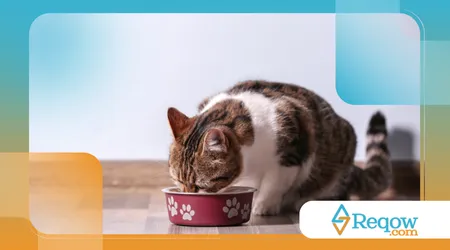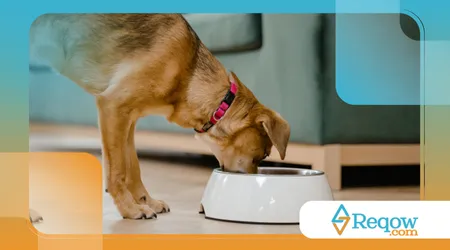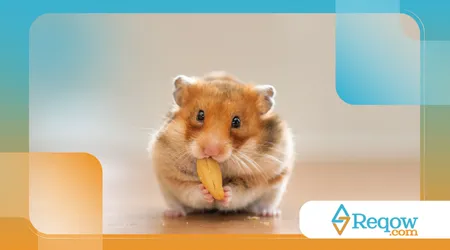Pets that eat too fast: real risks and how to avoid this dangerous behavior

Pets that eat too fast. Rapid food consumption, known technically as polyphagia or “gluttony,” is not just a matter of poor table manners.
Advertisements
In fact, it's a warning sign that deserves extra attention. By swallowing food without chewing properly, pets end up ingesting excess air.
This accumulated air in the stomach is the main cause of a feared problem: gastric dilatation volvulus (GDV), or gastric torsion.
This emergency condition is one of the biggest concerns for those who own large dogs, but it can affect any animal.
Symptoms include abdominal bloating, unsuccessful attempts to vomit, excessive salivation, and restlessness.
Advertisements
DVG is a race against time, requiring immediate veterinary intervention to save the animal's life.
Every minute, the risk of tissue necrosis and shock increases exponentially.
In addition to gastric torsion, rushing to eat can also cause frequent choking.
Large pieces of food can obstruct your pet's airway, leading to choking.
This is particularly concerning in puppies or small animals.
Another less dramatic but equally uncomfortable consequence is indigestion and vomiting.
Poorly digested food can irritate the gastrointestinal tract, resulting in recurring episodes of vomiting and diarrhea. This affects nutrient absorption and the pet's quality of life.
Obesity is also intrinsically linked to eating speed.
When your pet eats too quickly, the brain doesn't have enough time to process the satiety signals.
This leads to excessive calorie consumption, contributing to weight gain.
A study published in the Journal of the American Veterinary Medical Association in 2019.
It revealed that dogs that eat quickly have a significantly higher risk of developing obesity and gastrointestinal problems.
Why, and how to understand Pets that eat too fast
Understand the cause of behavior pets that eat too fast is crucial to addressing it effectively.
Several factors can contribute to this voracity, from natural instincts to behavioral issues.
One of the most common reasons is competition. In environments with multiple animals, competition for resources, including food, can lead to accelerated ingestion.
The pet feels the need to eat before others consume everything.
Another reason is boredom or lack of stimulation. Bored animals can develop compulsive behaviors, and eating quickly can be one of them.
Food becomes a source of excitement, albeit momentary.
Anxiety also plays a big role.
Read more: First-Time Pet Owners: 10 Common Mistakes and How to Avoid Them
Pets suffering from separation anxiety, for example, may associate eating with a moment of relief or comfort, speeding up the process.
Changes in routine or environment can trigger this anxiety.
Underlying health problems can also be a cause. Internal parasites, such as worms, can increase your pet's appetite, making them feel constantly hungry.
Conditions such as diabetes or hyperthyroidism can also manifest with an increased appetite.

The quality of the feed is another factor to consider. Low-quality foods may not provide the necessary satiety, leading the animal to eat more and faster in an attempt to meet its needs.
| Factors Influencing Feeding Speed |
| Competition with other animals |
| Boredom and lack of mental stimulation |
| Anxiety and stress |
| Health problems (parasites, endocrine diseases) |
| Feed quality |
Effective Strategies to Control the Voracity of Pets that Eat Too Fast
Fortunately, there are several smart approaches to slowing down your eating habits. pets that eat too fast.
The key is patience and consistency, adapting techniques to your furry friend's individual needs.
One of the most popular and efficient solutions are slow feeders.
These bowls have dividers, obstacles or protrusions that prevent the animal from swallowing large amounts of food at once.
He needs to work to access the grains, extending the meal time.
Find out more: Training Deaf Dogs: How to Use Visual and Vibration Signals to Communicate
For a practical example, imagine the slow feeder as a maze for the food.
. The pet can't get everything at once, but needs to use its tongue and snout to move the food through the barriers, ensuring that it eats more slowly.
Another technique is to spread small portions throughout the day. Instead of one or two large meals, offer several smaller meals.
This helps control hunger and prevents your pet from becoming too hungry to eat calmly.
Interact with your pet during mealtime. Instead of simply placing food and leaving, stay close, talking and petting.
Use techniques to control pets that eat too fast
This can help reduce anxiety associated with eating.
Environmental enrichment is essential. Providing interactive toys, such as treat dispensers or food puzzles, stimulates your pet mentally and physically.
This takes the focus away from food and reduces boredom.
For example: instead of using a traditional feeder, place some of the food in a Kong toy.
Your pet will need to lick, bite, and roll the toy to get the food to fall out, turning mealtime into a fun challenge.
Consider eating at fixed times.
Establishing a feeding routine helps regulate your pet's biological clock, reducing anxiety and urgency when it's time to eat. Their body gets used to expecting food.
The quality of the food also deserves attention. Invest in high-quality foods with nutritious ingredients and fiber, which provide greater satiety.
A premium food can help prevent your pet from feeling constantly hungry.
++ What is hypoglycemia in small pets and why it can be fatal without obvious signs
Consulting a veterinarian is always prudent. They can rule out underlying medical conditions causing the increased appetite.
The professional can also advise on the best diet and supplements, if necessary.
After all, we don't want our four-legged companions to turn mealtime into a mad dash, right?

A Matter of Love and Care for Pets That Eat Too Fast
Control the habit of pets that eat too fast is more than just correcting a behavior.
It's an act of love and responsibility. By implementing the right strategies, we protect them from serious health risks and ensure a longer, happier life.
Remember, every little change makes a big difference in your partner's life.
Patience and commitment from the owner are essential to the success of this journey. Prioritize your pet's health today!
Frequently Asked Questions about Pets That Eat Too Fast
What is the main risk of a pet eating too fast?
The main risk is the gastric dilatation-volvulus (GDV), or gastric torsion, an emergency condition that can be fatal if not treated quickly.
Do slow feeders really work for all pets?
Slow feeders are effective for most pets, but adjustments can vary. Some animals may take longer to adjust to the new feeding method.
Should I reduce the amount of food if my pet eats quickly?
Not necessarily. The problem isn't the quantity, but the rate of ingestion. The focus should be on slowing down the feeding, not reducing the portion, unless there's a veterinary recommendation for weight management.
Can stress make my pet eat quickly?
Yes, stress and anxiety are common factors that can lead to rapid eating behavior, as the pet seeks comfort or relief through food.
When should I see a veterinarian about my pet's eating speed?
If the change in eating rate is sudden, if there are other symptoms such as vomiting, abdominal bloating, or if home remedies aren't working, see a veterinarian immediately.
++ My dog eats too fast, what should I do?
++ Why your dog eats so much and what to do to reduce the problem
